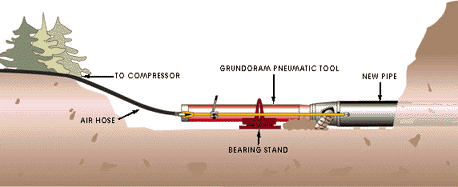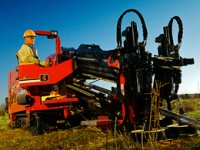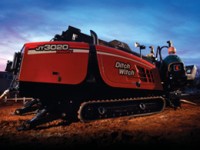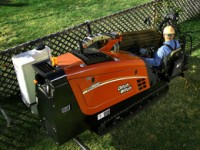Pipe Ramming

A guide to what we can achieve with Pipe Ramming
We at SW Directional Drilling are one of the market leaders within the UK Trenchless industry. With this method steel pipelines, with diameters of up to 1000mm and lengths to 100m can be installed in one single operation. Pipe Ramming prevents the need for costly and inefficient trenching methods which is are harmful to the environment and create massive amounts of waste materials. As with most trenching operations the impact on local surroundings can be massive and extremely unpleasing on the eye whilst also bringing very high installation costs. We aim to reduce those costs to you enabling your operations to become more feasible.
Typical examples of the types of task we can achieve for all utility and drainage pipelines
- Motorway/ Carriageway crossings installing single steel carriers
- Railway crossings at depths to fit within our settlement calculations to fall within NR guidelines
- Active runway/ taxiway crossings, preventing impossible trenching and flight cancellations
- Pipe Ramming under areas of protection ie parks, heritage areas, woodlands etc
- Pipeline installations into/ under buildings to allow internal and external upgrades
- Deep drainage installations preventing massive excavations with falls as tight as 1:200
- HV cable duct installations to safe depths out the way of potential future excavations
- Chemical pipelines to accommodate all nature of chemicals, no matter how corrosive
- Installations through most types of material, except solid rock
Pipe Ramming is an exceptionally quick method of installing large diameter pipelines up to distances of around 100m. A "direct line" route is taken and as the majority of the spoil gets contained within the pipeline(which is later cleaned out) settlement figures felt at the surface are the absolute minimum for any trenchless operation.
Method
The method is pneumatic, i.e. it uses pneumatic percussive blows to drive the pipe into the ground. The leading edge of the pipe is almost always open, and is typically closed only when smaller pipes are being installed. Its shape has to allow a small overcut (to reduce friction between the pipe and soil and improve load conditions on the pipe) and to direct the soil into the pipe interior instead of compacting it outside the pipe. These objectives are usually achieved by attaching a soil-cutting shoe or special bands to the pipe.
Further reduction of friction is typically achieved with lubrication, and different types of bentonite and/or polymers can be used for this purpose. Spoil removal from the pipe can be done after the whole pipe is in the ground (shorter installations), or, if the pipe with the spoil becomes too heavy before the installation is completed, the ramming can be interrupted and the pipe cleaned (longer installations). Spoil can be removed by auger, compressed air or water jetting.






























.jpg)











